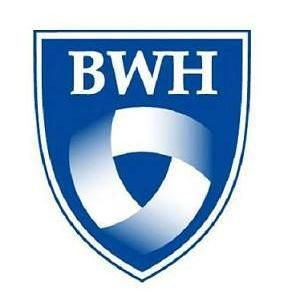Request Demo
Last update 08 May 2025
Collagen I
Last update 08 May 2025
Basic Info
Synonyms- |
Introduction- |
Related
5
Drugs associated with Collagen ITarget |
Mechanism Collagen I modulators |
Active Org. |
Originator Org.- |
Active Indication |
Inactive Indication |
Drug Highest PhasePhase 3 |
First Approval Ctry. / Loc.- |
First Approval Date20 Jan 1800 |
Target |
Mechanism Collagen I modulators |
Active Org. |
Originator Org. |
Active Indication |
Inactive Indication- |
Drug Highest PhasePhase 1 |
First Approval Ctry. / Loc.- |
First Approval Date20 Jan 1800 |
Target |
Mechanism Collagen I modulators |
Active Org. |
Originator Org. |
Active Indication |
Inactive Indication- |
Drug Highest PhasePreclinical |
First Approval Ctry. / Loc.- |
First Approval Date20 Jan 1800 |
7
Clinical Trials associated with Collagen INCT06532071
Advanced Imaging for Pulmonary Fibrosis
The purpose of this study is to determine if measurements of active collagen deposition using [68Ga]CBP8 positron emission tomography (PET) and tissue injury using dynamic contrast-enhanced magnetic resonance imaging (DCE-MRI) can predict an individual patient's pace of disease progression in non-idiopathic pulmonary fibrosis interstitial lung disease (non-IPF ILD) and identify which individuals will develop progressive pulmonary fibrosis.
Start Date21 Jan 2025 |
Sponsor / Collaborator |
NCT05619302
Molecular Imaging of Myocardial Fibrosis in Cardiac Amyloidosis
The primary aim of our pilot study is to determine whether fibrosis in the heart can be measured with [68Ga]CBP8, a positron emission tomography (PET) probe, using PET/magnetic resonance imaging (MRI) imaging, in 30 individuals with documented cardiac amyloidosis. The investigators will also enroll 15 individuals with recent myocardial infarction and 15 individuals with hypertrophic cardiomyopathy as positive controls for fibrosis, and the investigators will enroll 5 individuals without cardiovascular disease to undergo [68Ga]CBP8 PET/MRI imaging as a healthy control group.
The primary hypothesis of this study is that [68Ga]CBP8 will bind to interstitial collagen and quantify myocardial fibrosis in patients with cardiac amyloidosis. The investigators hypothesize that [68Ga]CBP8 uptake will be greater in patients with cardiac amyloidosis, myocardial fibrosis, and hypertrophic cardiomyopathy than in healthy controls. Secondly, the investigators also hypothesize that [68Ga]CBP8 activity more strongly correlates with standard MRI measures in patients with recent myocardial infarction and hypertrophic cardiomyopathy (where extracellular expansion is caused by myocardial fibrosis/collagen deposition) than in patients with cardiac amyloidosis (where myocardial fibrosis is combined with infiltration).
The primary hypothesis of this study is that [68Ga]CBP8 will bind to interstitial collagen and quantify myocardial fibrosis in patients with cardiac amyloidosis. The investigators hypothesize that [68Ga]CBP8 uptake will be greater in patients with cardiac amyloidosis, myocardial fibrosis, and hypertrophic cardiomyopathy than in healthy controls. Secondly, the investigators also hypothesize that [68Ga]CBP8 activity more strongly correlates with standard MRI measures in patients with recent myocardial infarction and hypertrophic cardiomyopathy (where extracellular expansion is caused by myocardial fibrosis/collagen deposition) than in patients with cardiac amyloidosis (where myocardial fibrosis is combined with infiltration).
Start Date03 Jan 2023 |
Sponsor / Collaborator |
NCT05417776
Collagen-targeted PET Imaging for Early Interstitial Lung Disease
The goal of this study is to investigate the ability of [68Ga]CBP8 to detect collagen deposition in early interstitial lung disease.
Start Date28 Sep 2022 |
Sponsor / Collaborator |
100 Clinical Results associated with Collagen I
Login to view more data
100 Translational Medicine associated with Collagen I
Login to view more data
0 Patents (Medical) associated with Collagen I
Login to view more data
7,054
Literatures (Medical) associated with Collagen I31 Dec 2025·Experimental Lung Research
Store-operated Ca
2+
entry contributes to the ASM phenotype transition in asthma
Article
Author: Ni, Hangqi ; Chen, Junjun ; Xia, Mengling ; Wei, Yuying ; Li, Ting ; Wang, Qing
31 Dec 2025·Future Science OA
Hesperidin alleviates pulmonary fibrosis by regulating EI24-mediated autophagy
Article
Author: Zhang, Yan ; Wan, Fang ; Ma, Wen
31 Dec 2025·Renal Failure
Carthamin yellow-loaded glycyrrhetinic acid liposomes alleviate interstitial fibrosis in diabetic nephropathy
Article
Author: Jin, Juan ; Ren, Peiyao ; He, Wenfang ; Zheng, Danna ; Zhao, Li ; Wang, Yifei
7
News (Medical) associated with Collagen I25 Nov 2024
Workshop, poster and oral presentation of data given as part of the 8th Annual Antifibrotic Drug Development (AFDD) Summit
Data demonstrate that NKT cells are activated in airways in IPF patients and inhibition of iNKT cell activity with GRI-0621 ameliorates pulmonary fibrosis in a preclinical model
Ongoing Phase 2 study with GRI-0621 in IPF patients to examine iNKT activity along with key biomarkers; Topline data readout expected in Q2 2025
Nov. 21, 2024 -- GRI Bio, Inc. (NASDAQ: GRI) (“GRI Bio” or the “Company”), a biotechnology company advancing an innovative pipeline of Natural Killer T (“NKT”) cell modulators for the treatment of inflammatory, fibrotic and autoimmune diseases, today announced the presentation of positive preclinical data demonstrating its lead program GRI-0621 reduces important inflammatory and fibrotic drivers in Idiopathic Pulmonary Fibrosis (IPF).
The data were presented as part of an invited talk titled, "A New Approach to Inflammatory Diseases," delivered by Marc Hertz PhD, Chief Executive Officer of GRI Bio, at the 8th Annual Antifibrotic Drug Development (AFDD) Summit, held November 19-21, 2024, in Boston, MA.
“We were pleased to participate at this prestigious event and engage with thought leaders in the field and present our novel approach for the treatment of inflammatory diseases. There remains a significant unmet need for therapeutic solutions that halt disease progression of fibrotic diseases such as IPF. Based on the growing body of positive data demonstrated by our lead program GRI-0621, we believe we have a validated and derisked clinical approach to address that need,” commented Marc Hertz, PhD, Chief Executive Officer of GRI Bio. “We believe GRI-0621 has the potential to provide meaningful benefit to IPF patients and we look forward to advancing it development and realizing its full value.”
Enhanced iNKT activity correlates with progression of fibrosis in MASH patients and key proinflammatory genes in BAL from IPF patients
iNKT cells are activated and accumulate in liver and lung in experimental fibrosis models
iNKT promote Type 1, Type 2 and Type 3 immune pathways involved in fibrosis
iNKT-deficient mice have reduced inflammatory damage and fibrosis
Daily oral administration of GRI-0621 in experimental animals
Inhibits key pro-inflammatory cytokines and inflammation
Decreases accumulation of neutrophils and activation of pro-fibrotic fibroblasts
Inhibits key fibrogenic cytokines including TGF-β
Additionally, the Company presented a poster titled, “Involvement of Type 1 Invariant Natural Killer T Cells in Driving Lung Fibrosis,” outlining flow cytometry and quantitative PCR analysis in bronchoalveolar lavage (BAL) fluid from IPF patients and healthy controls to characterize NKT cells. A bleomycin (3.0 IU/Kg via the intratracheal route) model was used with or without daily administration of nintedanib or a small molecule selective inhibitor of iNKT activity, GRI-0621, during the fibrotic phase to study the role of iNKT cells in pulmonary fibrosis in a treatment protocol.
Results highlighted in the poster demonstrated that IPF patients had increased expression of pro-fibrotic molecules in BAL, including Collagen 1-α1, osteopontin and TGF-β. There was an increase in IFN-γ producing CD45+CD3+CD56+ NKT cells in IPF patients compared to controls. In a second cohort, we confirmed the iNKT phenotype using an anti-Vα24-Jα18 TCR antibody. In the bleomycin model, GRI-0621 inhibition of iNKT cells improved a majority of inflammatory, fibrotic, and pathological features, including a reduction in lung injury, myofibroblast activity, collagen deposition, and fibrosis.
GRI Bio’s lead program, GRI-0621, is a small molecule RAR-βɣ dual agonist that inhibits the activity of human iNKT cells. In preliminary trials to date and previous trials with the oral formulation, GRI-0621 has been shown to improve fibrosis in multiple disease models and improve liver function tests and other markers of inflammation and injury in patients.
The Company is currently advancing the development of GRI-0621 in a Phase 2a, randomized, double-blind, multi-center, placebo-controlled, parallel-design, 2-arm study for the treatment of IPF. Interim data from the Phase 2a biomarker study is expected in the first quarter of 2025 and topline results are expected in the second quarter of 2025. For more information about the Phase 2a study, please visit clinicaltrials.gov and reference identifier NCT06331624.
GRI Bio is a clinical-stage biopharmaceutical company focused on fundamentally changing the way inflammatory, fibrotic and autoimmune diseases are treated. GRI Bio’s therapies are designed to target the activity of NKT cells, which are key regulators earlier in the inflammatory cascade, to interrupt disease progression and restore the immune system to homeostasis. NKT cells are innate-like T cells that share properties of both NK and T cells and are a functional link between the innate and adaptive immune responses. Type 1 invariant (iNKT) cells play a critical role in propagating the injury, inflammatory response, and fibrosis observed in inflammatory and fibrotic indications. GRI Bio’s lead program, GRI-0621, is an inhibitor of iNKT cell activity and is being developed as a novel oral therapeutic for the treatment of idiopathic pulmonary fibrosis, a serious disease with significant unmet need. The Company is also developing a pipeline of novel type 2 NKT agonists for the treatment of systemic lupus erythematosus. Additionally, with a library of over 500 proprietary compounds, GRI Bio has the ability to fuel a growing pipeline.
The content above comes from the network. if any infringement, please contact us to modify.

Clinical ResultImmunotherapyCell Therapy
09 May 2023
BRANCHBURG, N.J., May 9, 2023 /PRNewswire/ -- A study recently published in the Journal of Food & Nutritional Sciences, found that Lycored's astaxanthin prevented against collagen damage from neutrophils, discovering its potential to protect collagen and enhance skin health. This study assessed the addition of astaxanthin to neutrophils, the key players in the skin's immune response and photoaging, and the combined effects on collagen presence.
The two most prevalent types of collagen are I and III, which play major roles in skin elasticity. When skin is exposed to damaging elements it triggers an immune response in the skin that signals neutrophils, which try to eliminate the harmful effects, and in the process release free radicals that damage or break down collagen. In this study, researchers mimicked this process of triggering a neutrophil immune response using Tumor Necrosis Factor alpha (TNF-a).
When astaxanthin levels (5-50uM) were added to TNF-a primed neutrophils, a dose-dependent restraint was found in free radical activity released by neutrophils, and subsequent collagen I and III damage. The addition of 50 uM of astaxanthin prevented collagen I loss by 28.1±8%, and collagen III loss by 49.4±5.9%. It also did not impact cell numbers, or affect the expression of collagen I and III, which shows astaxanthin's effect is specific to the inhibition of free radical activity released by neutrophils, which damage cells during a response to environmental triggers (e.g., exposure to sunlight). Not only does this indicate astaxanthin's potential for enhanced skin benefits, but since collagen makes up the majority of cartilage in knees and joints, it also indicates potential support for those with an active lifestyle.
Lycored's astaxanthin uses algae-derived (Haematococcus pluvialis) astaxanthin carotenoid with anti-oxidative and anti-inflammatory properties that provides a multitude of science-backed benefits. Previous studies have also linked astaxanthin to positive sports recovery results, cellular health, heart health, joint health, immune systems support and mitigation of oxidative damage and inflammation. Astaxanthin cannot be synthesized by humans and, therefore, must be consumed in the diet via food or supplements.
Elizabeth Tarshish, PhD, Head of Claims and Clinical Affairs at Lycored states, "This study not only showcases astaxanthin's capabilities for skin health, but also underscores how beneficial astaxanthin can be for joint health and recovery for active individuals. At Lycored, we strive to help people discover beauty from within, so we're excited about what these results mean for the preventive health benefits of astaxanthin throughout the body."
View the full study at: Astaxanthin Supports Normal Human Dermal Fibroblasts from Neutrophil-Induced Collagen Damage in Co-Culture (starlingscience.com)
About Lycored
Lycored is an international company at the forefront of discovering beauty from within by combining nature's goodness with cutting edge science to deliver a sensory journey that impacts wellbeing. Established in 1995 in Israel, Lycored is the global leader in natural carotenoids for food, beverage and dietary supplement products. For more information visit .
Contact
Katie Hill
Padilla
+1 480 285 8148
[email protected]
Logo -
SOURCE Lycored
Clinical Result
24 Mar 2023
The biotechnology company will debut its first product at the in-cosmetics Global trade show from March 28-30, in Barcelona
NovaColl product image. (Credit: GlobeNewswire, Inc./ Cambrium)
Biotechnology company Cambrium has launched its first product: NovaColl. It is the first micro-molecular & 100% skin-identical collagen specifically designed for premium personal care formulations.
Owing to its structure and small molecular size, NovaColl is able to create powerful collagen benefits across skin layers. This new class of collagen active is vegan certified and produced through Cambrium’s precision fermentation process, offering formulators a unique combination of efficacy, skin-compatibility and sustainability.
NovaColl’s claims have been scientifically validated in third party in vitro studies, which demonstrated a broad range of activities working to holistically protect, maintain and enhance native collagen.
Beyond bio-similarity, NovaColl is 100% skin-identical, offering previously inaccessible levels of biocompatibility for personal care applications. To achieve this, Cambrium’s multi-disciplinary team of scientists and engineers searched through billions of protein sequences for skin-active features and indicators of efficacy. They identified NovaColl, a highly bioactive region of collagen I, the most prevalent collagen type in our human skin.
Rather than extracting collagen from animals, Cambrium uses yeast cells to grow their micro-molecular collagen in a cruelty-free and sustainable fermentation process, minimizing energy, land, and water use.
Source: Company Press Release
Analysis
Perform a panoramic analysis of this field.
login
or

AI Agents Built for Biopharma Breakthroughs
Accelerate discovery. Empower decisions. Transform outcomes.
Get started for free today!
Accelerate Strategic R&D decision making with Synapse, PatSnap’s AI-powered Connected Innovation Intelligence Platform Built for Life Sciences Professionals.
Start your data trial now!
Synapse data is also accessible to external entities via APIs or data packages. Empower better decisions with the latest in pharmaceutical intelligence.
Bio
Bio Sequences Search & Analysis
Sign up for free
Chemical
Chemical Structures Search & Analysis
Sign up for free


